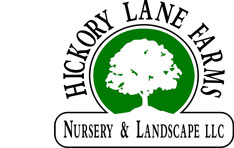Symmetrical or asymmetrical – that is the question!
Lately I’ve had a few folks tell me they like things “symmetrical” when I’m talking about design around their homes. I understand if we are talking about balance on both sides of the front door or around windows etc. But I wouldn’t get too carried away with symmetry. If your house is symmetrical as with Greek styles or early American colonial, then sure, total balance is appropriate. But the vast majority of homes are asymmetrical so the landscaping should reflect that.
Moreover, I’ve always tried to point out to folks that wanting plants to remain identical is just setting yourself up for disappointment. Plants are like people, they are variable! Yes there are clones, but even clonal duplicates are also affected by the environment, so one might be healthy and normal while another is damaged or unhealthy. Plants are not bricks so don’t expect them to look exactly alike.
The title of this newsletter might also have been called, formal or natural. Design for a natural look is pleasant, relaxed and much easier to maintain. 99.9 percent of the people that call me want “low maintenance”. Tight shearing and sharp edging are not low maintenance. Yes it looks neat and trim but it’s not easy to maintain. The famous old gardens of the world were usually formal gardens around castles in Europe. They were typically built by royalty with lots of servants to do the maintenance. That’s hardly the case today.
In most cases the boxy look we see in evergreens around American homes is because the plants chosen were fast growing, less expensive varieties that require a lot of pruning. This pruning is normally done with hedge clippers resulting in a box or globe creating a formal look. There are more dwarf, compact growing varieties that maintain a natural shape longer without heavy pruning. These varieties will result in a natural look with little pruning. All species of plants have their own unique shape …………until man takes the hedge clippers to them and makes them all look the same. It kills me how tropical plants in Florida can look the same as our hardy northern species when they are all sheared into boxes!
If shear you must, here are a couple more tips. Shear hedges in a “trapezoid”. That is, with the top narrower than the bottom. This will prevent the top of the hedge from shading the bottom making it sparse. A trapezoid shape will encourage the sunlight to hit all the way to the bottom for a nice full hedge. Also, if you’ve got multiple plants of the same type planted in a group or row it is probably designed for a mass or a hedge. Don’t prune them individually keeping them apart. The intent is for them to grow together, so let them. Just prune the tops and outsides of the entire group so they can grow together as intended.
Happy mid summer!


Comments are closed.